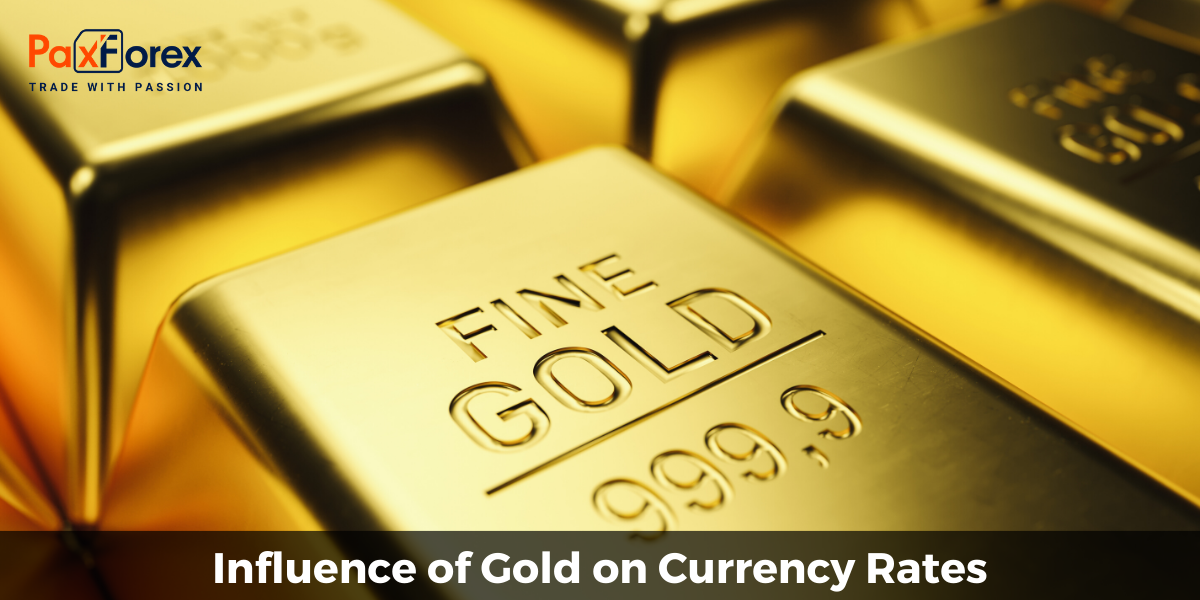
Gold is considered as one of the most popular metals in the world, in the eyes of investors and consumers.
Despite the fact that gold is no longer used as currency in the developed countries, it continues to have an impact on the currency markets. Moreover, there is a strong correlation between the gold price and currencies in the Forex market.
To illustrate this relationship, we should consider the following aspects.
1) Previously, the gold was used for insurance of rates, which weren’t secured by gold.
Even in the times of the Byzantine Empire the gold was used as a guarantor for transactions with different currencies. Moreover, almost to the end of the XX century, gold played the role of a reserve asset. The U.S. used the "gold standard" until it was canceled by President Nixon in 1971.
One of the reasons for its use was to limit the number of countries entitled to issue money. This was due to the fact that up to a cancelation of the "gold standard", governments could not print money not backed by gold.
Although the system of the "gold standard" is no longer used in the developed world, some economists believe that it is necessary to return to it due to a high degree of volatility of the US dollar and other currencies.
2) Gold is used in hedging inflation
Typically, the demand for gold is rising along with growing inflationary indicators. In this case, investor ‘s interest in gold conditioned by its own value and limited supply.
For the reason that the gold can’t be obtained artificially, it is much more stable than the conventional rate. For example, in April 2011, when investors feared devaluation of the official currencies, gold prices have risen to $ 1500 per ounce. This indicated a low degree of confidence in global currencies and pointed to the gloomy economic outlook.
3) The price of gold is reflected on the situation in those countries that import and export this metal.
The rate of any currency closely linked to indicators of exports and imports. If the country imports more than it exports, the rate of the national currency falls and vice versa.
Thus, if the price of gold increases, the national currency of a country that exports gold will rise.
In other words, the rise in gold prices could contribute to the trade surplus, or at least will reduce the deficit. In contrast, in countries importing gold on a large scale, the national currency will decline when the price of gold will rise.
4) Though buying gold, banks reduce the cost of the currency used in their calculations.
Buying the gold, central banks affect the balance of supply and demand of the national currency, which could lead to inflation. This is largely due to the fact that when buying gold, banks usually print money, increasing the money supply.
5) The price of gold is often used in determining the value of regional currencies, but there are exceptions.
Many people mistakenly believe that gold can always be used in determining the value of domestic currency of any country. Despite the fact that gold prices affect the currency rates, there isn’t always a clear inverse relationship, as many believe.
For example, the price of gold may rise at a high demand for the metal in the industry uses it in the production process. Nevertheless, it does not talk about the depreciation of the regional currencies, which at the moment can be quite high.
Thus, the price of gold can be used in assessing the value of the US dollar, but to determine the presence the inverse relationship, it is necessary to take into account all market conditions.
Gold has a strong impact on world currencies. Despite the rejection of the "gold standard", gold can be used as an alternative to paper currencies and protect against inflation.
Undoubtedly gold will continue to play an important role in the currency markets. Based on this, we can conclude that gold is a unique asset that can reflect the state of both the regional and global economies







